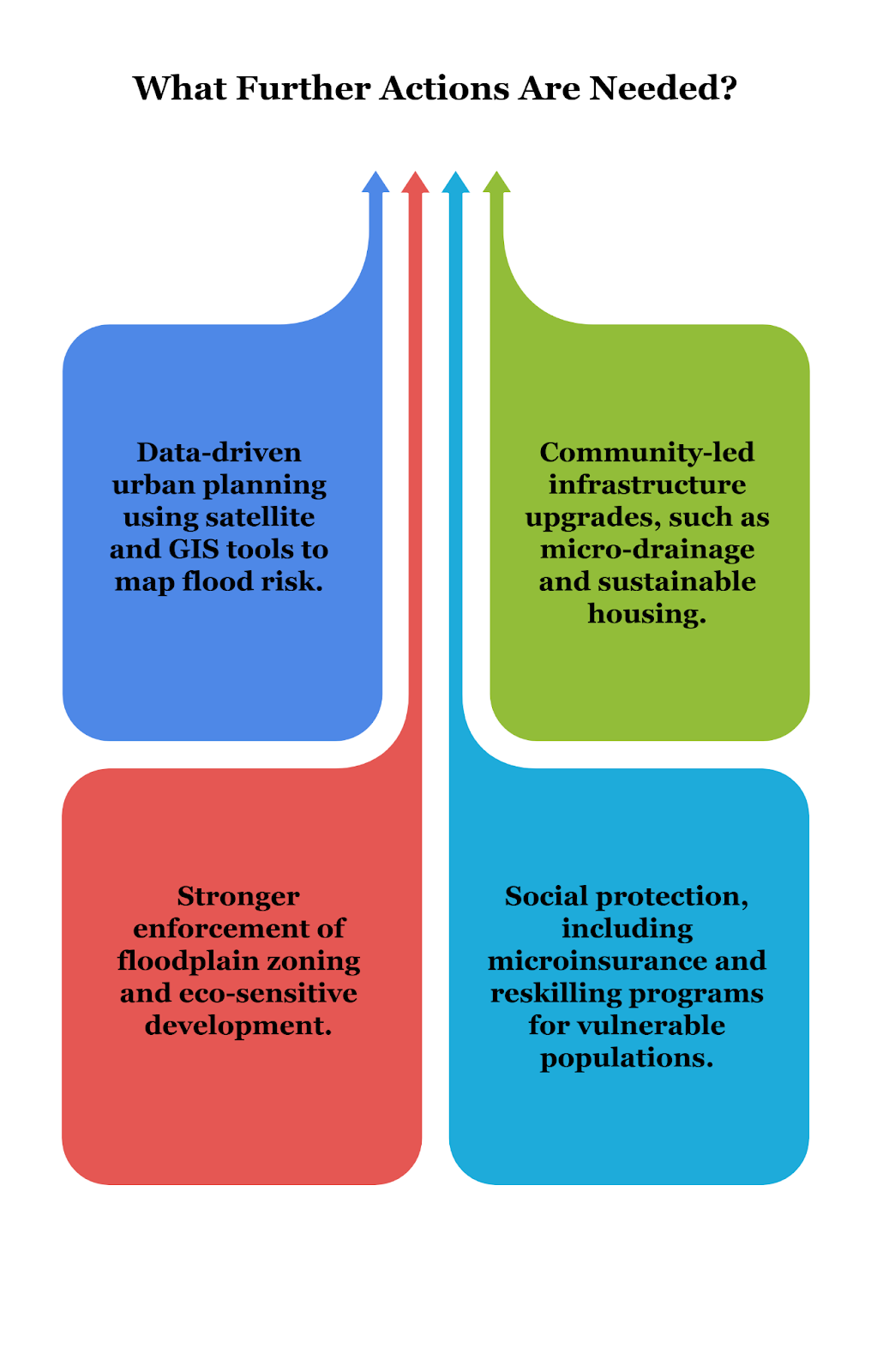Font size:
Print
India’s Slum Clusters in Flood-Prone Areas Reveal a Looming Urban Crisis
India Slum Clusters in Flood Zones: Study Warns of Mounting Risk
Context: Flooding affects over 2.3 billion people globally each year, with more than 600 million at risk in India alone. Yet, comprehensive data on how vulnerable communities—particularly in the Global South—are exposed to such risks remains limited.
What Is the Scale and Geography of Slum Vulnerability to Floods in India?
- India hosts the world’s largest number of slum dwellers exposed to flood risks, with over 158 million people—nearly one-third of the global slum population in flood-prone areas.
- These settlements are concentrated in megacities such as Mumbai, Delhi, Kolkata, and Bengaluru, as well as the Ganga-Brahmaputra basin. These areas are naturally low-lying and densely populated due to economic opportunities and unregulated urban sprawl.
- Rapid and unplanned urbanisation has led to encroachments on wetlands, lakes, and stormwater channels, reducing the natural capacity to absorb rainfall.
- Real estate expansion has prioritised construction over drainage, and as per NDMA, over 60% of Indian cities lack updated flood risk maps, hampering disaster-preparedness.
What Are the Key Drivers Behind Slum Settlements in Flood-Prone Areas?
- The influx of rural migrants into urban areas, driven by the pull of employment, leads them to occupy cheaper, low-lying land.
- Lack of affordable housing, combined with weak enforcement of planning and zoning laws, pushes the poor into informal settlements in ecologically fragile areas.
- Proximity to work, low informal rents, and inadequate rehabilitation schemes keep slum residents from relocating.
- Often, resettlement colonies are disconnected from livelihoods, and real estate pressure pushes poor communities further to the margins of cities and into hazard-prone zones.
What Are the Specific Risks and Impacts Faced by Slum Communities During Floods?
- Informal homes built with tarpaulin and tin collapse easily during floods. Poor or absent drainage and sewage systems lead to waterlogging. The lack of insurance and high population density makes evacuation and recovery difficult.
- Flooding worsens public health, causing outbreaks of waterborne and mosquito-borne diseases. Livelihoods and education are disrupted, assets are lost, and poverty deepens.
- Women face heightened burdens—sanitation challenges, harassment risks, and unpaid caregiving—during disaster periods. For example, Bengaluru’s rajakaluve-side slums face regular inundation due to encroachment and poor drainage planning.

What Steps Have Been Taken to Reduce Flood Vulnerability?
- PMAY-Urban for slum rehabilitation and affordable housing.
- Smart Cities Mission, incorporating flood resilience (e.g., Surat, Bhubaneswar).
- Jal Shakti Abhiyan, promoting water harvesting and watershed management.
- State projects like Mumbai’s BRIMSTOWAD to improve drainage.
- Participation in international frameworks like CDRI and the Sendai Framework.
How Effective Are These Interventions, and What Challenges Remain?
- While well-intentioned, most schemes suffer from delays, inter-departmental silos, and lack of community participation. Infrastructure remains inadequate, evident in the 2023–24 floods in Delhi and Chennai.
- Tenure insecurity of slum dwellers prevents long-term upgrades, and real estate pressures worsen displacement.
